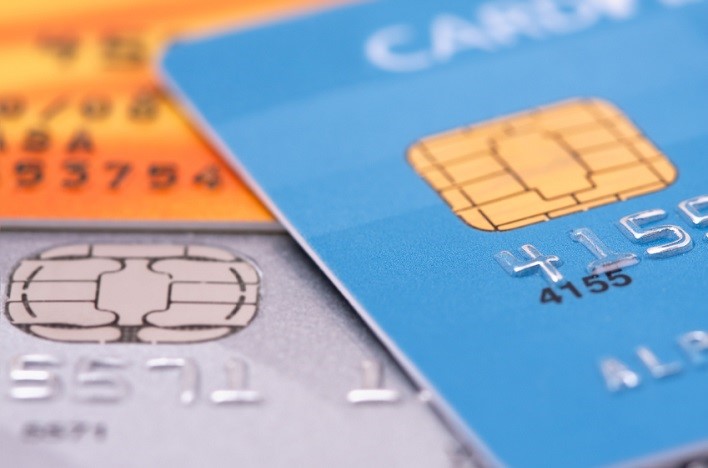The U.S. banking and credit card industries have spent the last several months gearing up for a big change.
Starting on Oct. 1, the country’s major credit card issuers—Visa, MasterCard, American Express and Discover—are going to require most businesses to accept cards embedded with EMV chips.
Peter McVey, vice president of treasury management services at Lead Bank, shares the following information that small businesses need to know now.
What Is EMV?
 EMV stands for Europay, MasterCard and Visa. Credit and debit cards are embedded with a chip that is used to authenticate the card during the purchase (rather than relying on the magnetic stripe).
EMV stands for Europay, MasterCard and Visa. Credit and debit cards are embedded with a chip that is used to authenticate the card during the purchase (rather than relying on the magnetic stripe).
How Does It Work?
Rather than swiping the magnetic stripe of the card through a card reader, the chip-embedded card is inserted into an EMV-capable reader, and the cardholder either enters a PIN to authenticate the in-person purchase or signs the authorization slip like normal. EMV is only intended to be used for in-person purchases (face-to-face). EMV will not be used for over the phone or Internet-based purchases.
Why Are We Moving to EMV?
Chip-embedded cards are more difficult to counterfeit than magnetic stripe-only cards. This reduces the opportunity for an in-person transaction to be fraudulent or unauthorized by the cardholder.
What Does It Mean to Me?
A new point-of-sale terminal or card reader is required in order to take advantage of EMV technology. The major credit card issuers have established an Oct. 1, 2015 deadline to be EMV-compliant.
There will be a liability shift in the event the in-person transaction is fraudulent or unauthorized by the cardholder. The retailer could become liable for the transaction IF the retailer failed to offer an EMV cardholder the ability to use their EMV card in the point-of-sale (POS) terminal. (Historically, the card issuer would be liable for the transaction in these situations.)
One exception: Automated fuel dispensers—“pay-at-the-pump”—have until 2017 to be ready for EMV.
What Should I Be Doing?
Look into replacing your existing POS terminals with EMV-capable and compliant versions. Work with your credit card processor and merchant services provider to determine what other changes are necessary to begin accepting EMV credit and debit cards.
This may require you to do some training with staff, so they can show cardholders how to use EMV cards and explain why EMV cards are preferred.


